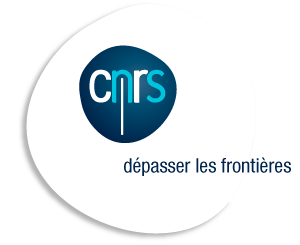Chunhui Tao
Key Laboratory of Submarine Geosciences, the Second Institute of Oceanography, SOA, Hangzhou, China
Xiang Xiao
Shanghai Jiao Tong University, China
Hongjun Yu
National Deep Sea Center, China
Xiangyang Li
China Ocean Mineral Resources R & D Association, China
Chinese Cruise 35th Science Party, Leg II
During the dives 89, 90, 93, 94, 95, 96 of submersible Jiaolong, of Leg II of Chinese Cruise 35th, we investigated Longqi-1(Dragon Flag) Field at 49°39′E, 37°47′S, which was the first active hydrothermal field found along the ultraslow-spreading Southwest Indian Ridge (SWIR). The outcrop of the hydrothermal field is mainly characterized by a series of extrusive units, principally alternating sheet flows, tubes and pillow basalts and breccias, with serpentinized peridotite and carbonate occasionally exposed nearby.
High and low temperature vents were newly found in pre-defined 'M zone' (Tao et al., 2012), and the venting area of 'S zone' was expanded in this leg. The distribution extents of hydrothermal activity and sulfide in both 'M' and 'S' zones were approximately 200m×200m, respectively.
Temperature and geochemistry characteristics of hydrothermal fluid from different vents are different. Six vent fluid samples were sampled successfully. The maximum temperature at vent site DFF6 (around 49.64798°E, 37.78024°S) of 'M zone' rise up to 379.3℃, with salinity 40‰, pH 3.42 (measured at 26.5℃ on board) and DO 14.3mg/L. The chimney is mainly consisting of pyrite, chalcopyrite and few sphalerite. Fluid from vent site DFF3(around 49.6495°E,37.78262°S), measured 352℃, yields the highest salinity up to 45‰, pH 3.21 (measured at 21.9℃ on board) and DO 12.9mg/L, indicating rich metal component and potential of mineralization.
Results of 8 days continuous temperature observation on DFF3 high temperature vent and nearby low temperature diffuse flow area, show there are semidiurnal tide cycles. Range of low temperature varied greater than that of high temperature. Intermittency of venting was observed.
In total, more than 20 species of vent-associated fauna, including Bathymodiolus mussel, gastropods, stalked barnacles, Alvinocaridid shrimps, Kiwa, polychaeta, sea anemones, holothurians and fishes, were observed and mostly sampled at 7 vent sites(high temperature vents DFF1, DFF3, DFF6 and DFF12; low temperature areas DFF2, DFF5 and DFF11). Low-temperature vent sites are dominated by black (scaly-foot) and brown gastropods, with patches of stalked barnacles and mussels on less active areas. Alvinocaridid shrimps are visually most common in high-temperature vent sites, with polynoid polychaetes and sea anemones occasionally observed. These observations of biological taxa in Longqi-1 Field are significantly different from those of Tiancheng low temperature hydrothermal field (63.923°E,27.852°S), indicating spatially differentiation of community structure along the SWIR.
According to this submersible investigation, It is indicated that the scale of Longqi-1 vent system is one of the largest hydrothermal venting system in the Mid-Ocean Ridges. The large amount, long periodical, extensive eruption vents discovered in this field, indicate great opportunities for geologists, geochemists and biologists.
We thank the captain and crew of the Leg II of Chinese Cruise 35th on R/V XiangYangHong 9, and the submersible Jiaolong group, who contributed to the success of this Leg. Thanks also go to Dr. Kang Ding for join this Cruise. This research was funded by the China Ocean Mineral R&D Association.




